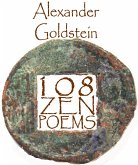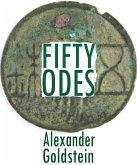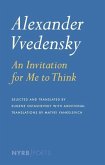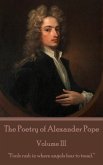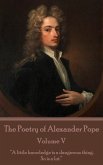Image thinking is a phenomenon when a concrete image intimates an abstract notion or viewpoint to express. In the sense, the term 'image' supposes the figurative imagery and its explanation, as well as an imaginative significance and its associations. To explain the image we use language while the idea of it reflects its abstract thought. As is well-known, language is an instrument of thinking, imagery makes a thought content. However, language is unable to express the idea or thought content directly; for this, it resorts to concrete imagery, one of the best ways of expression of which is poetry. Structure of the universe has come from three parts: images, numbers and principles/ideals. The word 'image' may be considered as external manifestation while the 'number' denotes the internal measuring, proportion and correlation of what is known as 'ideal.' Thus, there are numbers behind imagery, which can be true and false, while numbers are always changeable. When we speak of numbers we mean unfixed sort of them. For example, we usually say, literally: a dozen, a couple of something; seven or eight, about ten, more than one hundred and so forth. Category of 'imagery' is the most significant in poetry, the main purpose of which is to express the meaning of abstractions. Imagery, together with numbers, is the most fundamental instrument to represent poetic contents. First things are born to get then their images; upon getting their proper images, they multiply to possess their appropriate numbers. Since each and every image is a product of thought, we can find an image through contemplating an idea or ideal. For example, the intercourse or alternation of two opposite natural forces is represented by the image of motion, communication and great progress. In the universe of constant changes, there are myriads of things and matters with their various qualities and rules that can be handled well only through their opposite alternatives to bring a situation to the state of balance and proper result. This is the way to avoid one-sidedness, which is an equivalent of extremity and downfall in us. In addition, imagery represents a complete integral system reflected through the images and numbers to be more sophisticated throughout its long-term development and manifested in different schemes and diagrams, through some codes and symbols of which the traditional image thinking is reflected in full. These codes and symbols are information carriers, the key to the theory of knowledge and ontological philosophical system, combination of intuitive and abstract awareness. So, what the method of 'image thinking' is? Integrity of the system knowledge is one of the basic features of it, which is akin indeed to the feminine mind (correlation of the Yin power) in many respects. The qualities of the female intelligence and woman's logic are exactly the qualities of the figurative thinking. The female head is full of common sense. Eventually, common sense and the practical mind are characteristics of women (Yin) rather than of men (Yang), who are more liable to take their feet off the ground and soar to impossible heights. This confirms that the female logic is highly personal, according to which the whole world represents the wholeness of being, entire structure with its certain mechanism of organization, which, in turn, consists of many smaller systems and configurations to be reformed and transformed according to circumstances.
Dieser Download kann aus rechtlichen Gründen nur mit Rechnungsadresse in A, B, CY, CZ, D, DK, EW, E, FIN, F, GR, H, IRL, I, LT, L, LR, M, NL, PL, P, R, S, SLO, SK ausgeliefert werden.



